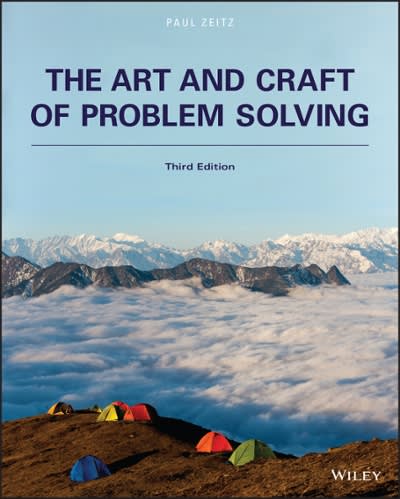
98 Exercises For the cotton -spinning experiment of Section 2.3 , page 14, identify any contrasts Or functions that you think might be interesting to estimate . For any contrasts that you have selected, list the corresponding contrast coefficients. 3. Pedestrian light experiment , continued The pedestrian light experiment was described in Exercise 14 of Chapter 3, and the data were given in Table 3.12, page 63. (a) Test the hypothesis that pushing the button does not lessen the waiting time for the "walk " signal ; that is, test the null hypothesis Ho: To - (T 1+ 2 + 1; )/3 0 against the one-sided alternative hypothesis HA : To - (T , + [2 + 13 ) /3 =0 (b) Using "no pushes of the button " as the control treatment , give a set of simultaneous 95 % confidence intervals for the treatment - versus - control contrasts . State your conclusions in a form that can be understood by all users of the pedestrian light . 4. Reaction time experiment (L. Cai, T. Li, Nishant, and A. van der Kouwe, 1996) The experiment was run to compare the effects of auditory and visual cues on speed of response of a human subject . A personal computer was used to present a " stimulus " to a subject , and the reaction time required for the subject to press a key was monitored The subject was warned that the stimulus was forthcoming by means of an auditory or a visual cue . The experimenters were interested in the effects on the subjects ' reaction time of the auditory and visual cues and also in different elapsed times between cue and stimulus. Thus, there were two different treatment factors: "cue stimulus" at two levels "auditory" or "visual," and "elapsed time between cue and stimulus" at three levels "five," "ten," or "fifteen" seconds. This gave a total of six treatment combinations, which can be coded as 1 = auditory, 5 seconds 4 = visual , 5 seconds 2 = auditory, 10 seconds 5 = visual , 10 seconds 3 = auditory, 15 seconds 6 = visual , 15 seconds The results of a pilot experiment, involving only one subject, are shown in Table 4.6. The reaction times were measured by the computer and are shown in seconds . The order of observation is shown in parentheses. (a) Identify a set of contrasts that you would find particularly interesting in this ex - periment . (Hint : A comparison between the auditory treatments and the visual treatments might be of interest ). These are your preplanned contrasts (b) Plot the data . What does the plot suggest about the treatments (c) Test the hypothesis that the treatments do not have different effects on the reaction time against the alternative hypothesis that they do have different effects








